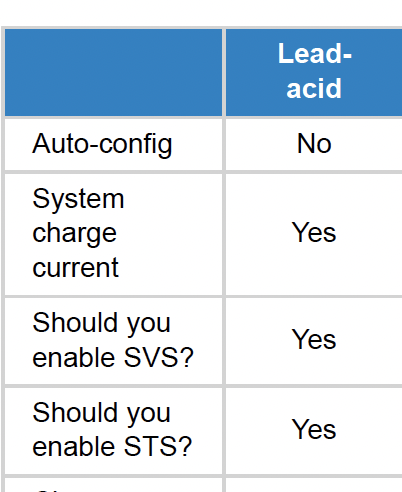I want to just make sure I have my thinking correct here:
DVCC is only relevant in systems with an external BMS. With batteries that do not have BMS Comms eg. lead or unsupported Lithium, whether DVCC is on or off, the programmed parameters on the inverter/charger/mppt are used and any limits set in the DVCC menu are ignored.
Is this table accurate:

Further to this, the presence of a SmartShunt has no effect on DVCC at all.
We have a site with a Lithium battery (in a golf cart) which does not have BMS comms and we want to use DVCC to set charge current limit between MPPT and MultiPlus but it is being ignored. We noted also that programmed Maximum charge voltage in DVCC was ignored when we tried to lower the voltage from DVCC menu. We have a SmartShunt installed.

